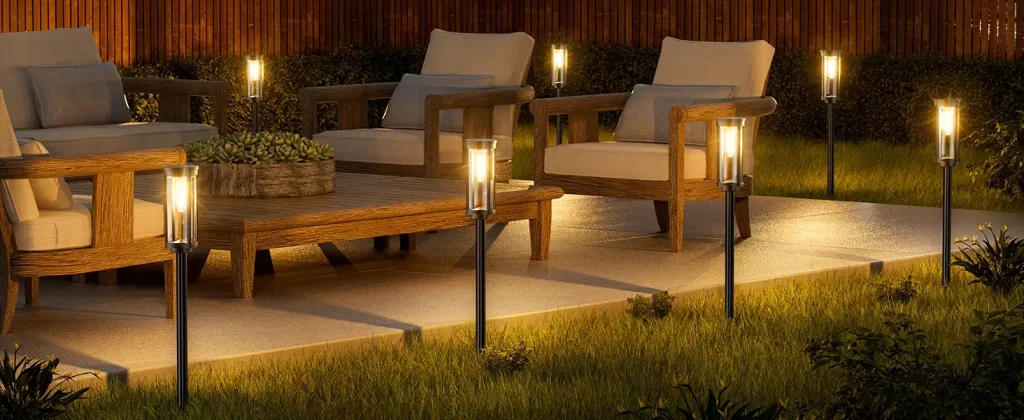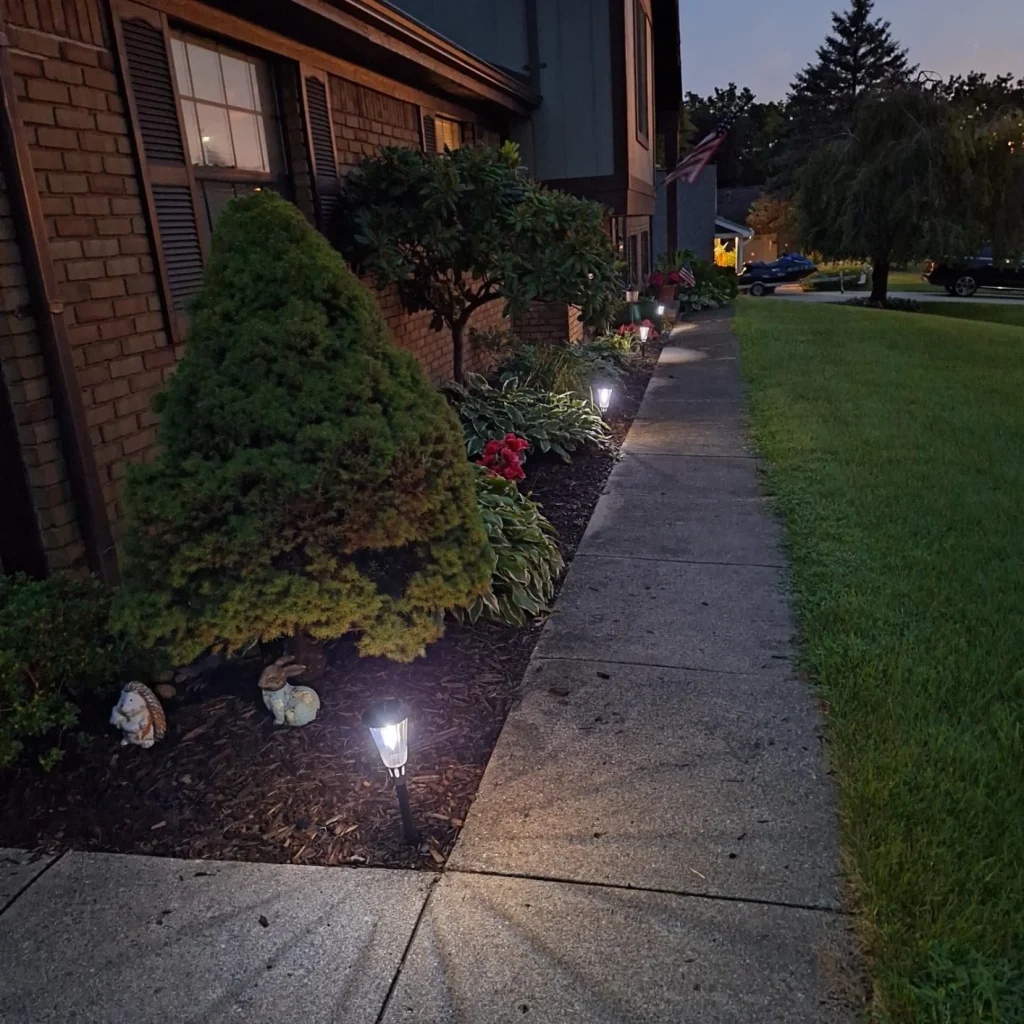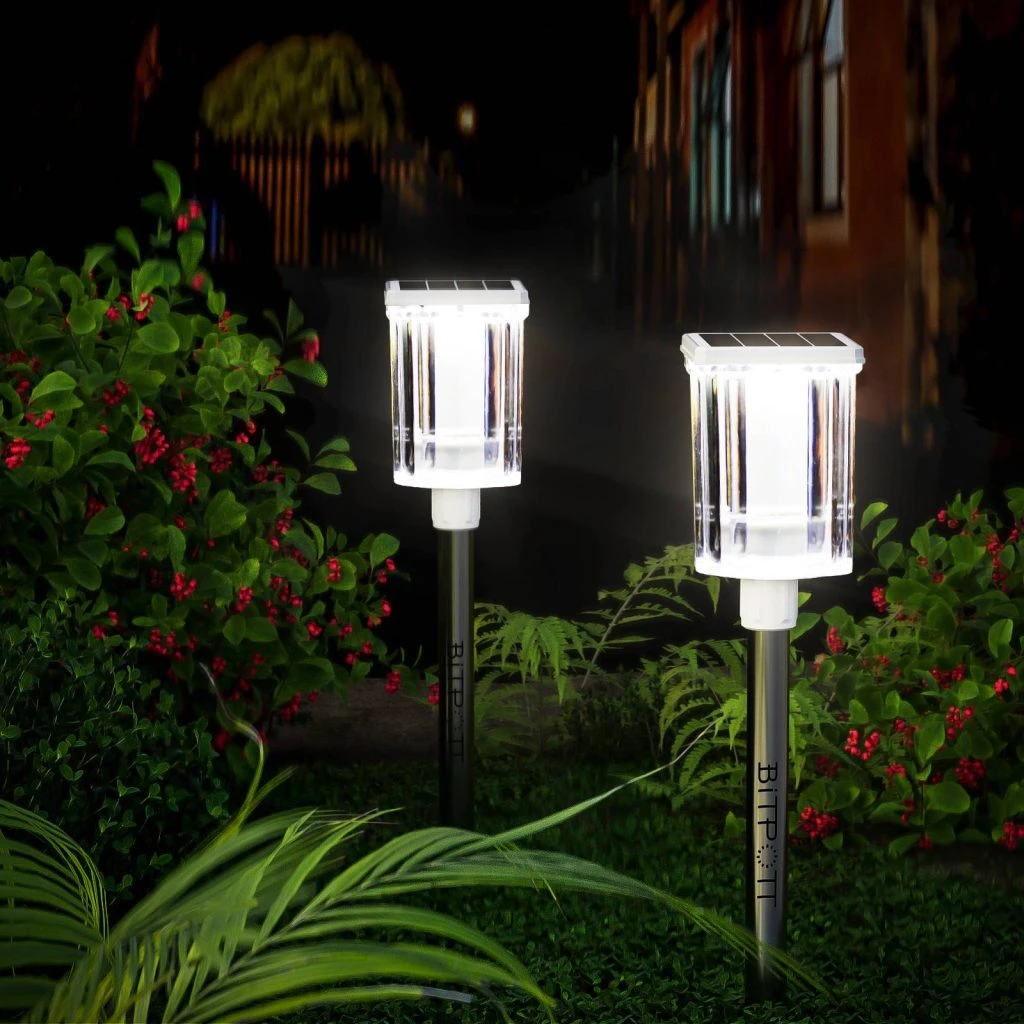Solar-powered pathway lights offer a sustainable option for outdoor illumination. Homeowners weigh their worth against cost, performance, and environmental impact. This article assesses the value of these lights through cost analysis, functionality, durability, and ecological benefits. U.S. authoritative reports provide evidence for an informed evaluation. Product examples from Bitpott’s solar path lights category illustrate real-world applications.

Cost Considerations
Initial investment and long-term savings shape the financial perspective. Solar lights differ from traditional wired options in pricing and upkeep.
Upfront Costs
Solar pathway lights range from $10 to $50 per unit. Forigat offers models like the “Solar Pathway Lights 4-Pack” at $29.99 and “Bright Solar Path Lights” at $49.99. Budget models cost $10 to $20, mid-tier options $20 to $30, premium versions $30 to $50. Installation requires no wiring or electrician fees. The U.S. Department of Energy (DOE) notes that wired lights average $50 to $100 per fixture, plus $100 to $300 for professional setup. Solar eliminates these expenses, lowering entry barriers.
Operating Expenses
Electricity drives wired lighting costs. A 10-watt bulb at 12 cents per kWh costs $3.50 annually, per DOE estimates. Solar lights use no grid power, reducing bills to zero. Batteries need replacement every 2 to 7 years, costing $5 to $15 each. Consumer Reports’ 2020 analysis shows maintenance averages $2 to $5 yearly for solar units, competitive with bulb replacements in wired systems.
Long-Term Savings
Lifespan impacts value. Solar lights last 5 to 15 years, wired fixtures 10 to 20 years with upkeep. DOE data indicates solar saves $20 to $50 over 10 years per light, factoring in electricity and installation. Forigat’s $29.99 4-pack breaks even in 3 years, assuming $10 yearly wired costs per light.
Performance and Functionality
Brightness, reliability, and ease of use determine practical worth. Solar lights face scrutiny for consistency.
Brightness Levels
Lumens measure output. Forigat’s “Bright Solar Path Lights” claim 100 lumens, exceeding typical 10 to 40-lumen ranges. The Illuminating Engineering Society (IES) advises 20 to 40 lumens for walkways. Wired lights offer 50 to 200 lumens, customizable with dimmers. Consumer Reports finds solar adequate for guidance, less so for security. Forigat’s higher output suits broader needs.
Reliability in Use
Solar lights depend on sunlight. NREL maps show 5 to 6 kWh/m²/day in southern U.S., supporting 6 to 8-hour runtimes. Northern areas average 3 to 4 kWh/m²/day, shortening output in winter. Overcast days reduce charge. DOE studies note wired systems maintain steady brightness. Forigat’s IP65-rated models ensure weather resistance, enhancing reliability.
Installation and Flexibility
Solar lights install with stakes or mounts. Forigat products feature adjustable stakes. No trenches or permits apply. Relocation proves simple. Wired setups require permanent planning, costing time and labor. The IES highlights solar’s adaptability for temporary or evolving landscapes. Ease enhances appeal.
Durability and Maintenance
Longevity and care requirements affect value. Components face outdoor challenges.
Component Lifespan
Solar panels last 10 to 15 years, LEDs 25,000 to 50,000 hours, batteries 2 to 7 years, per DOE’s “Lighting Facts.” Forigat’s LEDs align with this, offering 8 to 10-hour nightly use. Wired bulbs last 1,000 to 10,000 hours, fixtures 10 to 20 years. NREL research shows solar panels degrade 0.5% to 1% yearly. Quality determines endurance.
Environmental Resilience
Weather tests durability. Forigat’s IP65 rating resists rain, matching Energy Star tests. Cold cuts battery efficiency 20% below 32°F, heat speeds degradation above 90°F, per DOE findings. Wired systems risk electrical faults in storms. Consumer Reports notes solar fares well in moderate climates, less so in extremes.
Maintenance Needs
Solar requires panel cleaning every 6 months, battery swaps every few years. NREL data shows dirt cuts efficiency 5% to 10% if ignored. Forigat’s removable designs ease battery access. Wired lights need bulb changes, wiring checks. Annual upkeep costs align, but solar avoids electrician fees.
Environmental Impact
Sustainability weighs heavily in value. Solar lights claim green benefits.
Energy Consumption
Solar uses renewable energy. A 10-light wired setup consumes 36.5 kWh yearly, emitting 25 pounds of CO2, per DOE carbon metrics. Forigat’s solar lights produce zero emissions post-manufacture. The U.S. Environmental Protection Agency (EPA) credits solar with reducing grid reliance. Carbon savings grow with scale.
Manufacturing Footprint
Production carries an environmental cost. Solar lights require silicon, metals, and batteries. NREL estimates 50 to 100 kg CO2 per kW of panel capacity. Wired lights use simpler materials but rely on fossil-fuel grids. Lifecycle emissions favor solar over decades, per EPA analysis.
Waste and Recycling
End-of-life disposal matters. Batteries pose recycling challenges, though programs expand. Forigat’s LEDs and panels recycle at 70% efficiency, per DOE reports. Wired bulbs generate landfill waste. Solar’s modular design aids material recovery.

Insights from U.S. Authoritative Reports
DOE’s “Energy Star” program certifies solar lights at 20 to 100 lumens, costing $2 to $5 yearly to run. Forigat’s 100-lumen option fits premium tiers. Savings offset costs in 3 to 5 years.
NREL’s solar studies confirm 5 to 15-year lifespans. Panels and LEDs outlast batteries, viable with replacements. Forigat’s durability aligns with mid-tier estimates.
Consumer Reports’ 2020 review tested 30 solar models. Mid-tier units ($20–$30) balanced brightness and durability, lasting 7 to 10 years. Forigat’s $29.99 pack reflects this value.
IES guidelines set 1 to 2 foot-candles for paths. Forigat’s 100 lumens exceed this at 20 to 40 lumens, sufficient for most homes.
EPA’s carbon data shows solar cuts emissions by 20 to 50 pounds yearly per 10 lights. Forigat’s zero-energy use strengthens worth.
Regional Value Variations
Southern U.S. maximizes solar output with high insolation. Northern winters limit runtime. Forigat’s IP65 rating suits coastal humidity, arid zones preserve components.
User Needs and Preferences
Decorative users find Forigat’s 20 to 30-lumen options ideal. Safety-focused owners leverage 100-lumen models. Budget-conscious buyers favor zero-energy cost.
Assessing Solar-Powered Pathway Lights’ Worth
Solar-powered pathway lights prove worth through cost savings, ease, and sustainability. Forigat’s $29.99 to $49.99 range yields $20 to $50 savings over 10 years, per DOE. Performance suits paths at 20 to 100 lumens, per IES, with reliability tied to sunlight. Durability spans 5 to 15 years with care, per NREL. Emissions drop 20 to 50 pounds yearly, per EPA. Consumer Reports affirms mid-tier value. Location and intent shape the verdict.


Leave a Reply